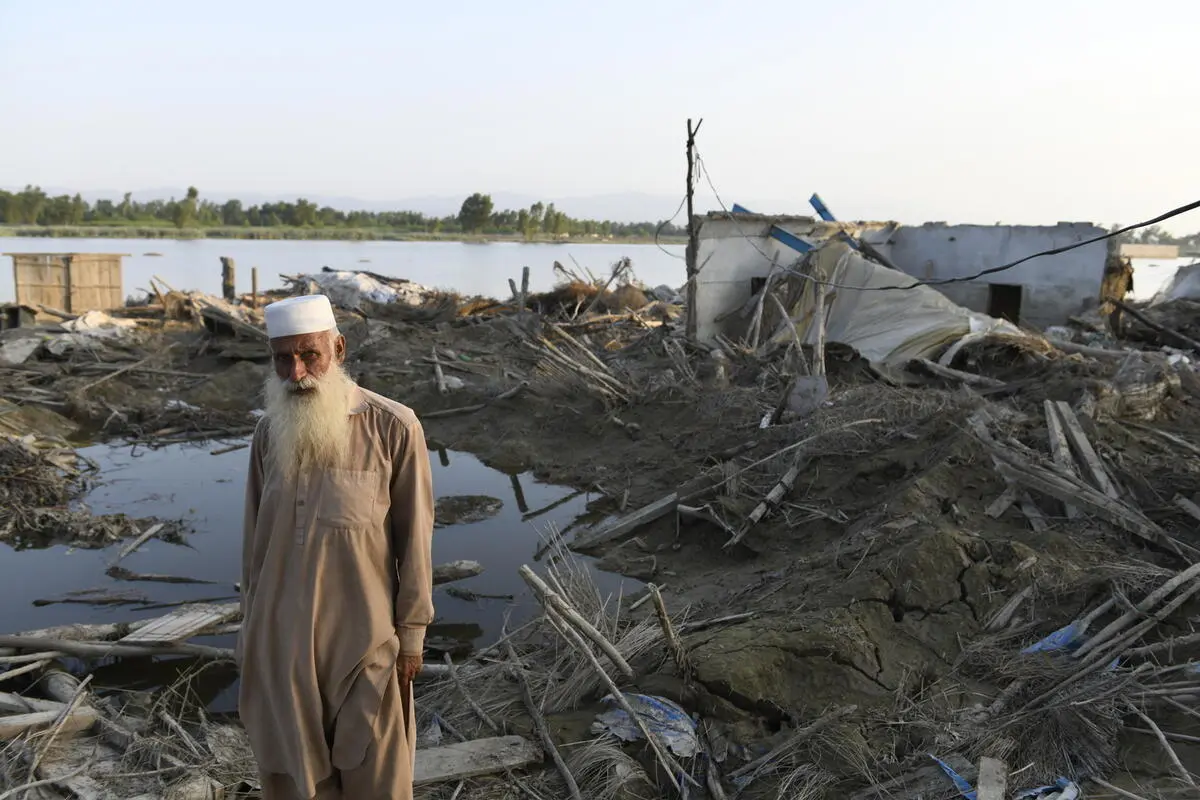
Ali Hamza
Exploring the Prospects of Forced Migration and its Mitigating Solutions
Most Read Stories Today
-
Water Scarcity and Artificial Rainfall: The Positive and The Negative Effects of Cloud Seeding, including Health Hazards and Climate Implications.
-
Renewable Energy in Rural Areas: Challenges, Opportunities, and Successful Rural Projects
-
Pakistan's Agriculture at Risk Due to Climate Variability
-
South Africa's Recent Floods: Is Climate Change to Blame?
-
South Korea's floods: root causes and prevention strategies.
-
South Africa: Cape Town, A City Under Fire
-
The Human Cost of Climate Disasters
-
Our Oceans, Our Future: The South African Dilemma of Overfishing
-
Degenerative Impact of Hydrocarbons On The Environment.
-
Sustainable Urban Planning - Copenhagen and the Path to Climate Resilience
Forced migration is a growing concern globally. With increasing climate changes, natural disasters, political instability, and economic downturns
Forced migration is a growing concern globally. With increasing climate changes, natural disasters, political instability, and economic downturns, millions of people are forced to leave their homes in search of safety and security. This trend is expected to continue in the future, making the issue of forced migration an urgent one that requires immediate attention.
Climate change and environmental degradation are having a significant impact on indigenous communities, both human and animal, causing them to abandon their traditional homes and seek refuge elsewhere. This process of forced migration is often accompanied by significant physical and emotional trauma, as well as financial hardship. Causes of Forced Migration are complex and varied. Some of the most significant drivers of this trend include natural disasters, conflict and violence, poverty, and political instability. Climate change is also playing an increasingly important role in forcing people out of their comfort, with rising sea levels, droughts, and severe weather events having a profound impact on communities worldwide.
Impact on Indigenous Communities Forced migration has a devastating impact on indigenous communities. These communities are often deeply connected to their lands and homes, and their forced displacement can lead to the loss of cultural heritage, traditional knowledge, and spiritual connection. Additionally, the sudden loss of resources and social support systems can result in a range of mental and physical health problems, as well as economic hardship. One of the most critical impacts of forced migration is on the health of the people who are forced to leave their homes. This is especially true for indigenous communities, who are often living in poverty and lack access to healthcare. The stress and trauma of migration can have long-lasting effects on their mental health, leading to conditions such as anxiety and depression. In the case of animals, forced migration can have devastating consequences for their populations. In many instances, animals are unable to adapt to new habitats, leading to a decline in their numbers. This, in turn can have a profound impact on the ecosystem and the balance of the food chain.
The Way Forward: Potential Solutions To address the issue of forced migration, it is critical to address the root causes that are driving this trend. This includes addressing climate change and reducing greenhouse gas emissions, promoting economic development and reducing poverty, and addressing the root causes of conflict and violence. Additionally, there is a need for more effective and sustainable systems for responding to natural disasters and other emergencies, including disaster risk reduction and early warning systems. The key potential solution is to focus on building resilience and adapting to the impacts of climate change. This can include measures such as improving infrastructure, investing in early warning systems, and providing support for communities to adapt to the changing environment.
Additionally, there is a need for stronger legal protections for refugees and internally displaced persons, as well as for investment in education and training programs that can help these communities rebuild their lives. The solution for indigenous communities and animals affected by forced migration is to support and protect them in their time of need. This can be done through the provision of adequate housing, healthcare, and education, as well as the protection of their ancestral lands. Governments and organizations can also work together to address the root causes of forced migration, such as climate change and environmental degradation.
Conclusion, Forced migration is a complex and pressing issue that demands immediate attention. To effectively address this issue, it is critical to understand the root causes and to focus on building resilience and addressing the fundamental causes. While there are no easy answers, the way forward lies in a combination of policy, legal, and financial solutions that can help communities to adapt and thrive in the face of a rapidly changing environment.
References: United Nations High Commissioner for Refugees (UNHCR). (2022). Forced Displacement in 2022. World Bank. (2021). Forced Migration and its Development Consequences. International Organization for Migration (IOM). (2021). Climate Change and Migration. United Nations Development Programme (UNDP). (2020). Conflict, Migration and Development. Intergovernmental Panel on Climate Change (IPCC). (2018). Global Warming of 1.5 °C. Oxfam International. (2022). The Economic Consequences of Forced Migration.
Edited by: Muhammad Abdullahi Ibrahim
https://www.threads.net/@muhammadabdullahiib?igshid=NTc4MTIwNjQ2YQ==

Terms & Conditions
Subscribe
Report
My comments